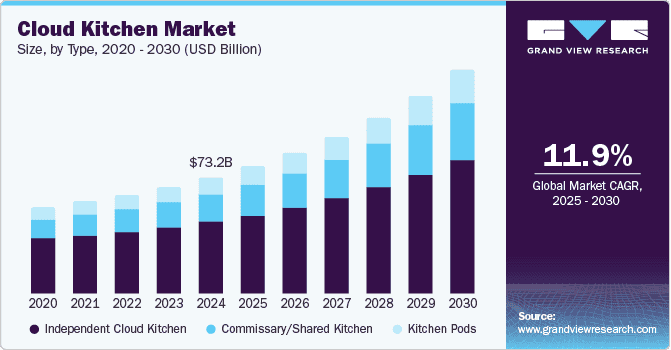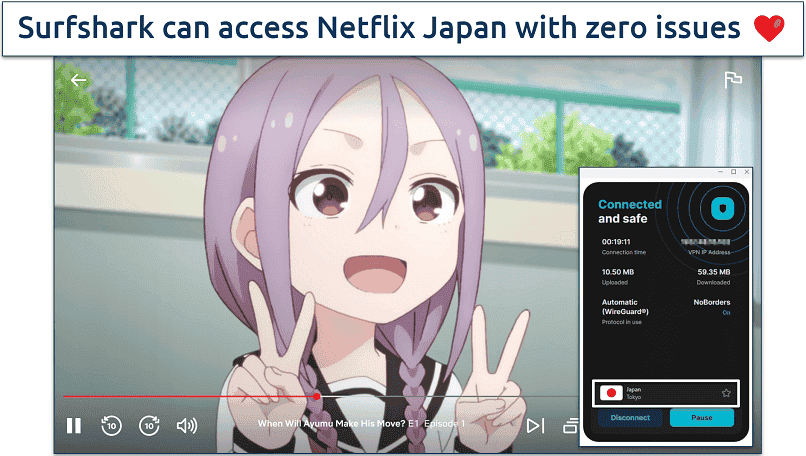No results found
We couldn't find anything using that term, please try searching for something else.

WD My Cloud v3.x, v4.x and v2.x Firmware Versions Download Links
UPDATE (4/15/2022): WD has terminating OS3 support as of April 15th of 2022!!! Generally one’s OS3 My Cloud will remain operational and accessible on
UPDATE (4/15/2022): WD has terminating OS3 support as of April 15th of 2022!!! Generally one’s OS3 My Cloud will remain operational and accessible on the local network. WD supported remote access service (MyCloud.com / OS3 mobile apps) has been be terminated. The second generation single bay My Cloud ((P/N: WDBCTLxxxxxxx-10, FW 02.xx.xx)) unit is not affected by the OS3 support termination, the second generation single bay My Cloud can be updated to OS5.
UPDATE: It appears WD is now blocking users from being able to download past versions of the v3.x, v4.x and v2.x firmware.
A listing of firmware versions for the single bay/single drive My Cloud and their WD download link if available. Note that both the v4.x and v2.x firmware are listed below. Make sure to use the correct one for your single bay/single drive My Cloud model. You cannot (at this time) load the v2.x firmware to v4.x My Cloud devices. Directions for downgrading firmware is located below.
Note: Downgrading the firmware will break certain features like remote access using the MyCloud.com site.
Note: These directions and files are for OS3 single bay My Cloud units ONLY ! ! ! If using OS5 firmware on a second gen single bay My Cloud see the OS5 subforum (https://community.wd.com/c/os5/my-cloud-os5/257) for any issues with that firmware!!!
v4.x Firmware (first generation single bay My Cloud)
Current firmware release notes: https://support.wdc.com/download/notes/WD_My_Cloud_Firmware_Release_Notes_04.06.00-111.pdf
04.06.00 – 111 ( 4/15/2022 ): https://downloads.wdc.com/nas/sq-040600-111-20220109.deb
04.05.00 – 353 ( 11/17/2021 ): https://downloads.wdc.com/nas/sq-040500-353-20211104.deb
04.05.00-342 (09/04/2019): https://downloads.wdc.com/nas/sq-040500-342-20190805.deb
04.05.00 – 334 ( 03/12/2019 ): http://download.wdc.com/nas/sq-040500-334-20190221.deb
04.05.00 – 327 ( 05/08/2017 ): http://download.wdc.com/nas/sq-040500-327-20180502.deb
04.05.00 – 320 ( 11/28/2017 ): http://download.wdc.com/nas/sq-040500-320-20171027.deb
04.05.00 – 315 ( 04/12/2017 ): http://download.wdc.com/nas/sq-040500-315-20170331.zip
04.04.05-101 (12/13/2016): http://download.wdc.com/nas/sq-040405-101-20161110.zip
04.04.04 – 101 ( 9/20/2016 ): http://download.wdc.com/nas/sq-040404-101-20160902.zip
04.04.03-113 (05/23/2016): http://download.wdc.com/nas/sq-040403-113-20160510.zip
04.04.02-105 (01/27/2016): http://download.wdc.com/nas/sq-040402-105-20160111.zip
04.04.01-112 (10/21/2015): http://download.wdc.com/nas/sq-040401-112-20151013.deb.zip
04.04.00-308 (9/28/2015): http://download.wdc.com/nas/sq-040400-308-20150924.deb.zip
04.04.00-307 (9/23/2015): http://download.wdc.com/nas/sq-040400-307-20150921.deb
04.04.00-303 (9/10/2015): http://download.wdc.com/nas/sq-040400-303-20150902.deb.zip
04.01.04-422 (5/11/2015): http://download.wdc.com/nas/sq-040104-422-20150423.deb.zip
04.01.03-421 (2/23/2015): http://download.wdc.com/nas/sq-040103-421-20150217.deb.zip
04.01.02-417 (12/17/2014): http://download.wdc.com/nas/sq-040102-417-20141211.deb.zip
04.01.01-413 (11/19/2014): http://download.wdc.com/nas/sq-040101-413-20141106.deb.zip
04.01.00-408 (10/27/2014): http://download.wdc.com/nas/sq-040100-408-20141010.deb.zip
04.00.01-623 (9/23/2014): http://download.wdc.com/nas/sq-040001-623-20140904.deb.zip
04.00.00-607 (7/9/2014): http://download.wdc.com/nas/sq-040000-607-20140630.deb.zip
v3.x Firmware (first generation single bay My Cloud)
03.04.01-230 (4/21/2014): http://download.wdc.com/nas/sq-030401-230-20140415.deb.zip
03.04.01-219 (3/5/2014): http://download.wdc.com/nas/sq-030401-219-20140218.zip
03.03.02-165 (1/29/2014): http://download.wdc.com/nas/WDMyCloud-030302-165.zip
03.03.01-156 (1/7/2014): http://download.wdc.com/nas/WDMyCloud-030301-156.zip
03.01.04-139 (11/4/2013): http://download.wdc.com/nas/WDMyCloud-030104-139-20131028.zip
03.01.03-127 (9/13/2013):
03.01.02-125 (9/5/2013):
03.00.03-413 (8/1/2013) – Initial Release:
v2.x Firmware (second generation single bay My Cloud)
Note: Second gen single bay My Cloud now supported by OS5. See the following WD Announcement for firmware links and directions to upgrade to OS5: https://community.wd.com/t/my-cloud-os-5-limited-public-release-now-available-for-more-my-cloud-devices/262305
Current OS3 firmware release notes: https://support.wdc.com/download/notes/WD_My_Cloud_Release_Notes_FW_2.42.115.pdf
2.42.115 (1/18/2022): https://downloads.wdc.com/nas/My_Cloud_GLCR_2.42.115.bin
2.41.121 ( 11/17/2021 ): https://downloads.wdc.com/nas/My_Cloud_GLCR_2.41.121.bin
2.41.116 (12/08/2020): https://downloads.wdc.com/nas/My_Cloud_GLCR_2.41.116.bin
2.31.204 (12/16/2019): https://downloads.wdc.com/nas/My_Cloud_GLCR_2.31.204.bin
2.31.195 (09/11/2019): https://downloads.wdc.com/nas/My_Cloud_GLCR_2.31.195.bin
2.31.183 (05/20/2019): http://download.wdc.com/nas/My_Cloud_GLCR_2.31.183.bin
2.31.174 (03/26/2019): http://download.wdc.com/nas/My_Cloud_GLCR_2.31.174.bin
2.31.163 (01/08/2019): http://download.wdc.com/nas/My_Cloud_GLCR_2.31.163.bin
2.31.149 (10/18/2018): http://download.wdc.com/nas/My_Cloud_GLCR_2.31.149.bin
2.30.196 (09/21/2018): http://download.wdc.com/nas/My_Cloud_GLCR_2.30.196.bin
2.30.193 ( 05/08/2018 ): http://download.wdc.com/nas/My_Cloud_GLCR_2.30.193.bin
2.30.181 ( 01/12/2018 ) : http://download.wdc.com/nas/My_Cloud_GLCR_2.30.181.bin
2.30.172 (11/16/2017): http://download.wdc.com/nas/My_Cloud_GLCR_2.30.172.bin
2.30.165 ( 04/12/2017 ): http://download.wdc.com/nas/my_cloud_glcr_2.30.165.bin
2.21.126 (12/13/2016): http://download.wdc.com/nas/My_Cloud_GLCR_2.21.126.bin
2.21.119 (9/20/2016): http://download.wdc.com/nas/My_Cloud_GLCR_2.21.119.bin
2.21.111 ( 7/25/2016 ): http://download.wdc.com/nas/my_cloud_glcr_2.21.111.bin
2.11.140 (3/29/2016): http://download.wdc.com/nas/My_Cloud_GLCR_2.11.140.zip
2.11.133 ( 01/27/2016 ): http://download.wdc.com/nas/My_Cloud_GLCR_2.11.133.zip
2.10.310 (10/28/2015): http://download.wdc.com/nas/My_Cloud_GLCR_2.10.310.zip
2.10.302 (10/7/2015) – Initial Release: http://download.wdc.com/nas/My_Cloud_GLCR_2.10.302.zip
How to downgrade to earlier firmware (v4.x)
https://community.wd.com/t/easy-method-to-downgrade-to-previous-version-of-the-firmware/93489
How to upgrade from firmware file using SSH ( v4.x )
Connect to My Cloud using SSH.
Change to the Public folder: cd /DataVolume/shares/Public/
Download the firmware file: wget http://download.wdc.com/nas/<name of firmware file>
Extract the firmware file: unzip <name of firmware file>
Issue the firmware upgrade from file command:
/usr/local/sbin/updateFirmwareFromFile.sh /DataVolume/shares/Public/<name of extracted firmware file>
After My Cloud reboots post firmware upgrade one can remove the firmware upgrade files from the Public folder using Windows File Explorer or Macintosh Finder. Or one can issue the following commands from the Public folder using SSH:
rm -f <name of firmware file>
rm -f <name of extracted firmware file>
How to downgrade to earlier firmware (v2.x)
It has been reported that if one follows the steps below they can downgrade the firmware on a 2nd gen v2.x firmware single bay/single drive My Cloud. Proceed at your own risk!!!
- download the v2.x firmware version that you want to downgrade from the link above .
- Open web browser, navigate to My Cloud Dashboard (http://wdmycloud/ or http://wdmycloud.local). If needed, log into the My Cloud Dashboard.
- On the Dashboard, select Settings > Firmware Update.
- set “ Enable Auto update ” to “ OFF ” . This is prevent will prevent the My Cloud from automatically update to a new firmware version post downgrade to early firmware .
- Under “Manual Update,” click the “Update from File” button/link.
- Browse to the directory where where previous single bay/single drive v2.x firmware was downloaded. Select the firmware image file (.bin), then select the “Open” button/link.
- Follow the additional onscreen dialog messages (if any) when prompted to install the firmware file.
- When the firmware has been instal the My Cloud should reboot with the old firmware version instal and list on the My Cloud Dashboard .
note : If there are any problem post firmware downgrade , perform a 40 second reset using the reset button on the back of the My Cloud . Sometimes this is clear can clear up certain issue that occur post firmware install .
My Cloud v4.x User Manual – English
http://www.wdc.com/wdproducts/library/UM/ENG/4779-705103.pdf
My Cloud v2.x User Manual – English
http://www.wdc.com/wdproducts/library/um/eng/4779-705147.pdf
Other Languages User Manual (both v4.x and v2.x)
http://www.wdc.com/wdproducts/library/?id=439&type=25
GPL Source Code for My Cloud
Please ensure you are using the correct WD My Cloud source code for your firmware version . The GPL source code is is is firmware specific and is not compatible with My Cloud device using a different firmware .
See the My Cloud Download page for more information on how to use and compile these GPL files.
WD My Cloud GPL Source Code – 03.xx.xx
Release Date: 06/04/2014(03.04.01-230a), 04/22/2014(03.04.01-230), 03/04/2014(03.04.01-219), 1/27/2014(03.03.02-165), 1/7/2014 (03.03.01-156), 11/4/2013 (03.01.04-139), 10/2/2013(03.01.03-127), 10/2/2013(03.01.02-125), 10/2/2013(03.00.03-413)
gpl-source-wd_my_cloud-03.04.01-230a.zip: http://download.wdc.com/gpl/gpl-source-wd_my_cloud-03.04.01-230a.zip
gpl-source-wd_my_cloud-03.04.01-230.zip: http://download.wdc.com/gpl/gpl-source-wd_my_cloud-03.04.01-230.zip
gpl-source-wd_my_cloud-03.04.01-219.zip: http://download.wdc.com/gpl/gpl-source-wd_my_cloud-03.04.01-219.zip
gpl-source-wd_my_cloud-03.03.02-165.zip : http://download.wdc.com/gpl/gpl-source-wd_my_cloud-03.03.02-165.zip
gpl-source-wd_my_cloud-03.03.01-156.zip: http://download.wdc.com/gpl/gpl-source-wd_my_cloud-03.03.01-156.zip
gpl-source-wd_my_cloud-03.01.04-139.zip: http://download.wdc.com/gpl/gpl-source-wd_my_cloud-03.01.04-139.zip
gpl-source-wd_my_cloud-03.01.03-127.zip : http://download.wdc.com/gpl/gpl-source-wd_my_cloud-03.01.03-127.zip
gpl-source-wd_my_cloud-03.00.03-413.zip: http://download.wdc.com/gpl/gpl-source-wd_my_cloud-03.00.03-413.zip
gpl-source-wd_my_cloud-03.01.02-125.zip: http://download.wdc.com/gpl/gpl-source-wd_my_cloud-03.01.02-125.zip
WD My Cloud GPL Source Code – support 04.xx.xx
Release Date : 04.05.00 – 342 ( 09/04/2019 ) , 3/12/2019(04.05.00 – 334 ) , 05/03/2018(04.05.00 – 327 ) , 5/23/2016(04.04.03 – 113 ) , 2/11/2016(04.04.02 – 105 ) , 10/21/2015(04.04.01 – 112 ) , 09/28/2015(04.04.00 – 308 ) , 05/11/2015(04.01.04 – 422 ) , 2/23/2015(04.01.03 – 421 ) ,
gpl-source-wd_my_cloud-04.05.00-342.zip : https://downloads.wdc.com/gpl/gpl-source-wd_my_cloud-04.05.00-342.zip
gpl-source-wd_my_cloud-04.05.00-334.zip : http://downloads.wdc.com/gpl/gpl-source-wd_my_cloud-04.05.00-334.zip
gpl-source-wd_my_cloud-04.05.00-327.zip: http://downloads.wdc.com/gpl/gpl-source-wd_my_cloud-04.05.00-327.zip
gpl-source-wd_my_cloud-04.04.03-113.zip: http://downloads.wdc.com/gpl/gpl-source-wd_my_cloud-04.04.03-113.zip
gpl-source-wd_my_cloud-04.04.02-105.zip: http://download.wdc.com/gpl/gpl-source-wd_my_cloud-04.04.02-105.zip
gpl-source-wd_my_cloud-04.04.01-112.zip: http://download.wdc.com/gpl/gpl-source-wd_my_cloud-04.04.01-112.zip
gpl-source-wd_my_cloud-04.04.00-308.zip: http://download.wdc.com/gpl/gpl-source-wd_my_cloud-04.04.00-308.zip
gpl-source-wd_my_cloud-04.01.04-422.zip : http://download.wdc.com/gpl/gpl-source-wd_my_cloud-04.01.04-422.zip
gpl-source-wd_my_cloud-04.01.03-421.zip: http://download.wdc.com/gpl/gpl-source-wd_my_cloud-04.01.03-421.zip
gpl-source-wd_my_cloud-04.01.02-417.zip: http://download.wdc.com/gpl/gpl-source-wd_my_cloud-04.01.02-417.zip
gpl-source-wd_my_cloud-04.01.01-413.zip : http://download.wdc.com/gpl/gpl-source-wd_my_cloud-04.01.01-413.zip
gpl-source-wd_my_cloud-04.01.00-408.zip: http://download.wdc.com/gpl/gpl-source-wd_my_cloud-04.01.00-408.zip
gpl-source-wd_my_cloud-04.00.01-623.zip: http://download.wdc.com/gpl/gpl-source-wd_my_cloud-04.00.01-623.zip
gpl-source-wd_my_cloud-04.00.00-607.zip : http://download.wdc.com/gpl/gpl-source-wd_my_cloud-04.00.00-607.zip
WD My Cloud GPL Source Code – support 2.xx.xx
Release Date: 12/8/2020(2.41.116), 12/19/2019(2.31.204), 2.31.195 (09/11/2019), 07/26/2019(2.31.183), 3/26/2019(2.31.174), 01/08/2019(2.31.163), 10/25/2018(2.31.149), 05/02/2018(2.30.193), 01/10/2018(2.30.181), 06/06/2017(2.30.165), 11/10/2016(2.21.126), 10/4/2016(2.21.119)…
WD_MyCloud_GPL_v2.41.116_20201117.tar.gz: https://downloads.wdc.com/gpl/WD_MyCloud_GPL_v2.41.116_20201117.tar.gz
wd_mycloud_gpl_v2.31.204_20191206.tar.gz : https://downloads.wdc.com/gpl/WD_MyCloud_GPL_v2.31.204_20191206.tar.gz
WD_MyCloud_GPL_v2.31.195_20190829.tar.gz : https://downloads.wdc.com/gpl/WD_MyCloud_GPL_v2.31.195_20190829.tar.gz
WD_MyCloud_GPL_v2.31.193_20190722.tar.gz: https://downloads.wdc.com/gpl/WD_MyCloud_GPL_v2.31.193_20190722.tar.gz
WD_MyCloud_GPL_v2.31.183_20190514.tar.gz: https://downloads.wdc.com/gpl/WD_MyCloud_GPL_v2.31.183_20190514.tar.gz
wd_mycloud_gpl_v2.31.174_20190313.tar.gz : http://downloads.wdc.com/gpl/WD_MyCloud_GPL_v2.31.174_20190313.tar.gz
WD_MyCloud_GPL_v2.31.163_20181219.tar.gz: http://downloads.wdc.com/gpl/WD_MyCloud_GPL_v2.31.163_20181219.tar.gz
WD_MyCloud_GPL_v2.31.149_20181015.tar.gz: http://downloads.wdc.com/gpl/WD_MyCloud_GPL_v2.31.149_20181015.tar.gz
WD_MyCloud_GPL_v2.30.193_20180502.tar.gz: http://downloads.wdc.com/gpl/WD_MyCloud_GPL_v2.30.193_20180502.tar.gz
WD_MyCloud_GPL_v2.30.181_20180110.tar.gz: http://downloads.wdc.com/gpl/WD_MyCloud_GPL_v2.30.181_20180110.tar.gz
WD_MyCloud_GPL_v2.30.165_20170321.tar.gz: http://downloads.wdc.com/gpl/WD_MyCloud_GPL_v2.30.165_20170321.tar.gz
WD_MyCloud_GPL_v2.21.126_20161110.zip: http://downloads.wdc.com/gpl/WD_MyCloud_GPL_v2.21.126_20161110.zip
WD_MyCloud_GPL_v2.21.119_20160901.tar.gz: http://downloads.wdc.com/gpl/WD_MyCloud_GPL_v2.21.119_20160901.tar.gz
WD_MyCloud_GPL_v2.21.111_20160629.tar.zip: http://download.wdc.com/gpl/WD_MyCloud_GPL_v2.21.111_20160629.tar.zip
WD_MyCloud_GPL_v2.11.140_20160321.tar.zip : http://download.wdc.com/gpl/WD_MyCloud_GPL_v2.11.140_20160321.tar.zip
WD_MyCloud_GPL_v2.11.133_20160122.tar.zip: http://download.wdc.com/gpl/WD_MyCloud_GPL_v2.11.133_20160122.tar.zip
WDMyCloud_GPL_v2.10.310_20151013.tar.zip: http://download.wdc.com/gpl/WDMyCloud_GPL_v2.10.310_20151013.tar.zip




![What is a Cloud Kitchen? [Concept & Business Model]](/img/20241224/0w4c4v.jpg)
